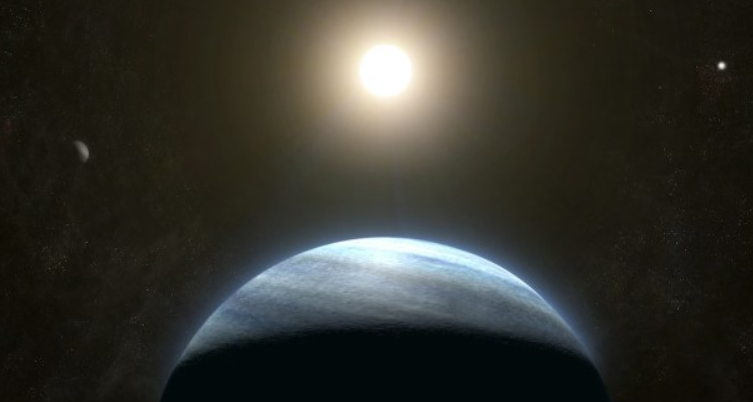A small gas giant located within the habitable zone of a binary star system.
Sometimes, it is possible to come across the concept of habitable worlds in different regions of the universe. A possible solution may have been found by a group of citizen scientists, led by the researchers from the Flatiron Institute – a moon that orbits a mini-Neptune, which in turn orbits a star, while the latter is also accompanied by another star. There are many objects in this system; thus, let us focus on the star system known as TOI 4633. This system may comprise of two planets. One of them has a fairly short period of 34 days; however, it is not visible transiting between the Earth and its host star, and was discovered only through radial velocity measurements. Also, this planet has not been officially confirmed by exoplanet researchers. Out of the two planets, the other planet is currently known as TOI 4633c. Classified as a “mini-Neptune” it is about one and a half times the size of Neptune, planet number eight in our solar system and it is believed that it has a dense gaseous atmosphere like a gas giant. It takes 272 days to complete one orbit around its host star and that makes it one of the 40 planets with the longest orbital periods in this civilization.
The planet TOI 4633c is in the eclipsing binary system with its host star and located in the habitable zone of its star with distance about 0. Located at a distance of 85 AU from the G-type star it revolves around. This implies that there is a likelihood of liquid water being present at its surface. The planet is relatively small and has a dense atmosphere, so there is no possibility of liquid water on the surface.
Surprisingly, it may have a moon or TOI 4633c. The larger planets with longer orbits than the two planets we are comparing, that is, Venus and Mercury, are usually given moons. A moon of this smaller planet would not be bound by the same rules as the gas giant planet it orbits around, thus making it a possible settlement, much like in Avatar’s Pandora or Star Wars’ Endor.
This system is unique as the star TOI 4633c orbits is also orbited by another star. Binary systems were not thought to be able to host planets and, therefore, the possibility of life in such systems was a topic of debate not that long ago, as depicted in The Three-Body Problem. However, theoretically, binary systems can have the habitable zone which makes it possible for the planets to have a stable orbit around at least one of the stars.
The smaller star, a red dwarf, makes one revolution around its larger binary partner every 230 years, thus being relatively close when referring to interstellar space. The effect of this closeness to TOI 4633c cannot be fully determined and there is no chance that the resulting planet would be similar to Tatooine.
However, this system could not be comparable to popular works of fiction. However, it outweighs these by providing the possibility to solve some long-standing problems in the theory of planetary formation. In addition to the search for an exomoon around TOI 4633c, the scientists will keep on observing the system to check its stability. They will also determine the compatibility of the current (and proposed) planets with the existing theories regarding planetary system formation.
Do not forget to share your opinion with us to provide you with the best posts !




0 Comments